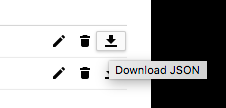Mengautentikasi aplikasi terinstal dengan akun pengguna
Panduan ini menjelaskan cara melakukan autentikasi menggunakan akun pengguna untuk mengakses BigQuery API ketika aplikasi Anda diinstal pada komputer pengguna.
Untuk memastikan aplikasi hanya mengakses tabel BigQuery yang tersedia bagi pengguna akhir, lakukan autentikasi dengan menggunakan kredensial pengguna. Kredensial pengguna hanya dapat menjalankan kueri terhadap project Google Cloud pengguna akhir, bukan project aplikasi. Akibatnya, pengguna akan ditagih untuk kueri, alih-alih aplikasi.
Sebelum memulai
- Buat Google Cloud project yang mewakili aplikasi terinstal.
- Instal library klien BigQuery.
-
Instal library autentikasi.
Java
Jika Anda menggunakan Maven, sertakan dependensi berikut di file pom Anda.
Python
Instal integrasi oauthlib untuk Google Auth.
pip install --upgrade google-auth-oauthlib
Node.js
Instal integrasi oauthlib untuk Google Auth.
npm install google-auth-library
npm install readline-promise
Menyiapkan kredensial klien
Gunakan tombol berikut untuk memilih project dan membuat kredensial yang diperlukan.Membuat kredensial secara manual
- Buka halaman Credentials di Google Cloud console.
- Lengkapi kolom yang wajib diisi pada Layar izin OAuth.
-
Pada halaman Kredensial
, klik tombol Buat kredensial.
Pilih ID klien OAuth.
- Pilih Desktop sebagai jenis aplikasi, lalu klik Buat.
-
Download kredensial dengan mengklik tombol Download JSON.

Simpan file kredensial ke
client_secrets.json. File ini harus didistribusikan dengan aplikasi Anda.
Mengautentikasi dan memanggil API
-
Gunakan kredensial klien untuk melakukan
alur OAuth 2.0.
Java
Python
Node.js
-
Menggunakan kredensial yang diautentikasi untuk terhubung ke BigQuery API.
Java
Python
Node.js
Saat Anda menjalankannya, kode contoh akan meluncurkan browser yang meminta akses ke project yang terkait dengan rahasia klien. Anda dapat menggunakan kredensial yang dihasilkan untuk mengakses resource BigQuery pengguna karena contoh tersebut meminta cakupan BigQuery.
Langkah berikutnya
- Pelajari cara lain untuk mengautentikasi aplikasi Anda agar dapat mengakses BigQuery API.
- Pelajari autentikasi dengan kredensial pengguna akhir untuk semua Cloud API.

